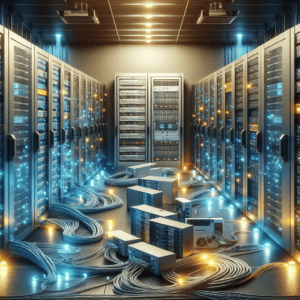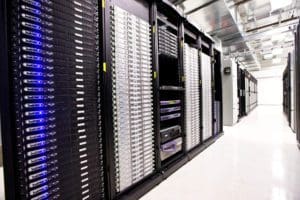Data centres are the backbone of modern business operations, and understanding the various types is crucial for maximising efficiency and performance. Whether you're looking to optimise your existing infrastructure or planning a new facility, it’s essential to know the advantages of each data centre type. At EziBlank, we specialise in innovative airflow management and energy-monitoring systems, ensuring that your data centre runs at peak efficiency while reducing power consumption. Explore our expert insights and discover how our cutting-edge blanking panels can enhance your operations today.
What are the different types of data centers?
Data centres are the backbone of modern digital operations, and they come in various forms to meet diverse needs. From enterprise data centres that are privately owned and operated by a single organisation to colocation facilities where multiple businesses share the space, each type is designed to address specific operational requirements. Hyperscale data centres, with their vast capacity, support massive cloud computing needs, while edge data centres bring processing power closer to the source of data generation, reducing latency. Understanding these different types of data centres is essential for businesses looking to optimise their digital infrastructure.
Read More
Why Are Data Centers Important?
In an increasingly connected world, data centres have become the unsung heroes of our digital lives, powering everything from online shopping to streaming services and complex AI operations. These critical facilities store, process, and distribute vast amounts of data, ensuring that businesses and individuals can access the digital tools and information they need in real-time. The importance of data centres extends beyond mere storage; they are integral to the functioning of our digital economy, providing the backbone for everything from everyday internet usage to the advanced computing required for innovation and growth.
Read More
The Ultimate Guide to Data Centers
Data centres are the backbone of the digital world, housing the servers and networking equipment that power everything from websites to cloud computing services. A well-designed data centre must balance performance, efficiency, and security, with key considerations including location, infrastructure, power supply, cooling systems, and security measures. Effective airflow management, such as the use of blanking panels and hot/cold aisle containment, is essential for maintaining optimal temperatures and reducing energy consumption. Additionally, data centres must incorporate robust backup systems, such as uninterruptible power supplies (UPS) and generators, to ensure continuous operation in the event of power failures. As businesses increasingly rely on digital infrastructure, the role of data centres continues to expand, making it crucial to optimise their design and operations for reliability, efficiency, and scalability.
Read More
